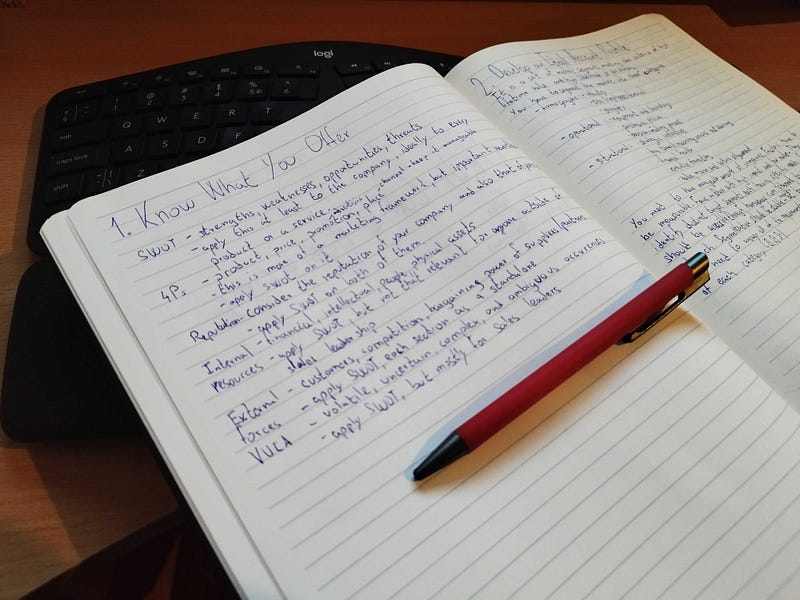Handwritten Notes: Why They Can Be More Effective Than Digital
Written on
Chapter 1: The Value of Writing by Hand
Why opt for traditional paper notes when digital tools offer speed and accessibility? A straightforward yet powerful technique to enhance information retention is to write it down. This discussion emphasizes the significance of using physical paper instead of digital formats.
Writing on paper demands greater effort than typing, which can lead to improved memory retention. The more information we remember, the more efficient we become, enabling higher productivity without frequent reference to notes.
Moreover, many individuals find pen and paper writing to be a soothing experience. Let's explore various methods for note-taking.
Section 1.1: Choosing the Right Notebook
The most apparent choice for jotting down notes is a notebook, and the selection is entirely personal. Keep in mind that our perception of value plays a role here. If you choose a budget-friendly notebook for your most crucial notes, you may treat it with less care than if it were housed in a premium one.
Experiment with different notebooks: use less expensive ones for daily notes and reserve more luxurious options for significant information. This principle applies to pens as well.
Taking notes enhances retention, and using paper elevates this benefit. Our brains recognize the effort invested, striving to retain the information longer. Notebooks are ideal for capturing insights as you learn or experiment.
Section 1.2: The Sketchbook Advantage
Sketchbooks offer the same benefits as notebooks but provide the freedom of an unlined surface. They are perfect for capturing diagrams, sketches, and complex equations, allowing for visual note-taking.

Chapter 2: Alternative Note-Taking Methods
Sometimes, brief pieces of information don't require extensive space. Enter sticky notes: small, colorful reminders that can easily be placed in your line of sight. For instance, some individuals use them to jot down passwords, as noted by Slovakia's Deputy Prime Minister for Investments and Informatization.
For quick reference, sticky notes can serve as excellent reminders or to-do lists, allowing you to track tasks by repositioning them.
Video Description: In this video, learn how to create beautiful handwritten notes that capture your ideas effectively.
Section 2.1: The Bullet Journal Technique
Bullet journals combine brief notes with a calendar format, helping you track tasks, important dates, and reminders. While many rely on digital calendars, a physical bullet journal offers a reliable alternative when technology fails.
A diary serves a unique purpose, allowing you to reflect on daily events or activities. This practice can enhance memory retention and provide insights into your life’s progression.
Video Description: Discover how Google Keep can help you organize handwritten notes efficiently.
Section 2.2: The Diary of Gratitude
Consider starting a gratitude diary, where you jot down three things you appreciate each day. This practice not only boosts your mood but can also enhance performance.
You can choose between dated and non-dated diaries. Dated diaries offer structured space for each day, while non-dated versions allow for flexibility in your writing.
Let me know your thoughts on these methods! If you enjoyed this piece, try a quick exercise: how many times can you tap your finger in five seconds? Not only will it get you moving, but it will also help spread the word about this writing!